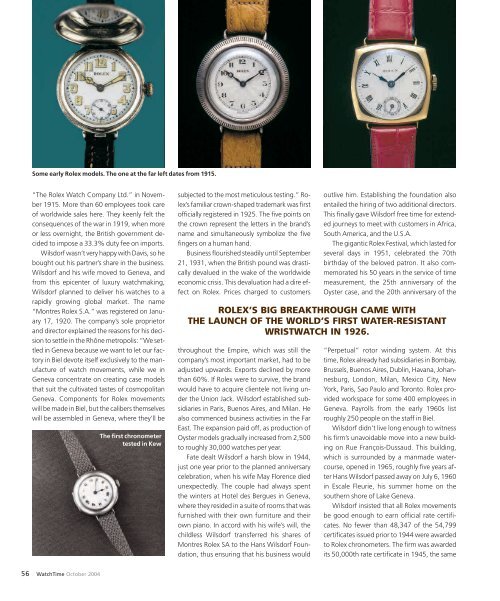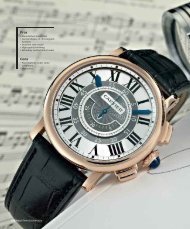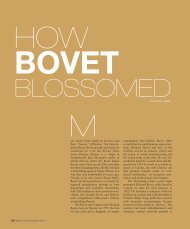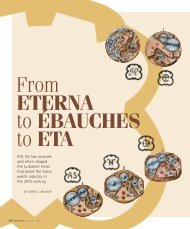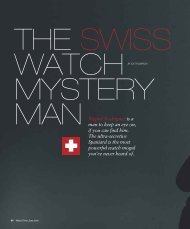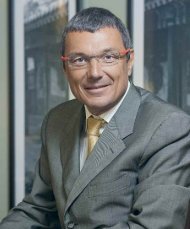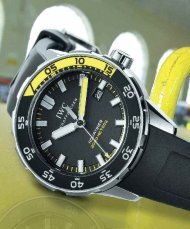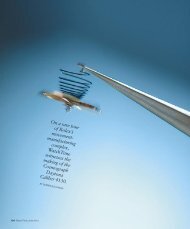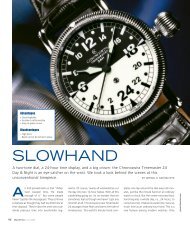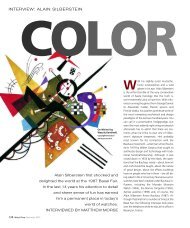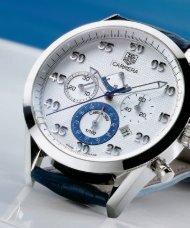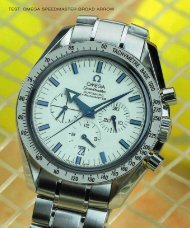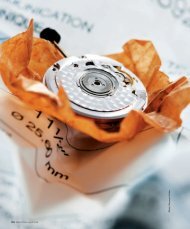WT_2004_05: ROLEX: THE STATUS SYMBOL
WT_2004_05: ROLEX: THE STATUS SYMBOL
WT_2004_05: ROLEX: THE STATUS SYMBOL
You also want an ePaper? Increase the reach of your titles
YUMPU automatically turns print PDFs into web optimized ePapers that Google loves.
Some early Rolex models. The one at the far left dates from 1915.<br />
“The Rolex Watch Company Ltd.” in November<br />
1915. More than 60 employees took care<br />
of worldwide sales here. They keenly felt the<br />
consequences of the war in 1919, when more<br />
or less overnight, the British government decided<br />
to impose a 33.3% duty fee on imports.<br />
Wilsdorf wasn’t very happy with Davis, so he<br />
bought out his partner’s share in the business.<br />
Wilsdorf and his wife moved to Geneva, and<br />
from this epicenter of luxury watchmaking,<br />
Wilsdorf planned to deliver his watches to a<br />
rapidly growing global market. The name<br />
“Montres Rolex S.A.” was registered on January<br />
17, 1920. The company’s sole proprietor<br />
and director explained the reasons for his decision<br />
to settle in the Rhône metropolis: “We settled<br />
in Geneva because we want to let our factory<br />
in Biel devote itself exclusively to the manufacture<br />
of watch movements, while we in<br />
Geneva concentrate on creating case models<br />
that suit the cultivated tastes of cosmopolitan<br />
Geneva. Components for Rolex movements<br />
will be made in Biel, but the calibers themselves<br />
will be assembled in Geneva, where they’ll be<br />
56 WatchTime October <strong>2004</strong><br />
The first chronometer<br />
tested in Kew<br />
subjected to the most meticulous testing.” Rolex’s<br />
familiar crown-shaped trademark was first<br />
officially registered in 1925. The five points on<br />
the crown represent the letters in the brand’s<br />
name and simultaneously symbolize the five<br />
fingers on a human hand.<br />
Business flourished steadily until September<br />
21, 1931, when the British pound was drastically<br />
devalued in the wake of the worldwide<br />
economic crisis. This devaluation had a dire effect<br />
on Rolex. Prices charged to customers<br />
throughout the Empire, which was still the<br />
company’s most important market, had to be<br />
adjusted upwards. Exports declined by more<br />
than 60%. If Rolex were to survive, the brand<br />
would have to acquire clientele not living under<br />
the Union Jack. Wilsdorf established subsidiaries<br />
in Paris, Buenos Aires, and Milan. He<br />
also commenced business activities in the Far<br />
East. The expansion paid off, as production of<br />
Oyster models gradually increased from 2,500<br />
to roughly 30,000 watches per year.<br />
Fate dealt Wilsdorf a harsh blow in 1944,<br />
just one year prior to the planned anniversary<br />
celebration, when his wife May Florence died<br />
unexpectedly. The couple had always spent<br />
the winters at Hotel des Bergues in Geneva,<br />
where they resided in a suite of rooms that was<br />
furnished with their own furniture and their<br />
own piano. In accord with his wife’s will, the<br />
childless Wilsdorf transferred his shares of<br />
Montres Rolex SA to the Hans Wilsdorf Foundation,<br />
thus ensuring that his business would<br />
outlive him. Establishing the foundation also<br />
entailed the hiring of two additional directors.<br />
This finally gave Wilsdorf free time for extended<br />
journeys to meet with customers in Africa,<br />
South America, and the U.S.A.<br />
The gigantic Rolex Festival, which lasted for<br />
several days in 1951, celebrated the 70th<br />
birthday of the beloved patron. It also commemorated<br />
his 50 years in the service of time<br />
measurement, the 25th anniversary of the<br />
Oyster case, and the 20th anniversary of the<br />
<strong>ROLEX</strong>’S BIG BREAKTHROUGH CAME WITH<br />
<strong>THE</strong> LAUNCH OF <strong>THE</strong> WORLD’S FIRST WATER-RESISTANT<br />
WRISTWATCH IN 1926.<br />
“Perpetual” rotor winding system. At this<br />
time, Rolex already had subsidiaries in Bombay,<br />
Brussels, Buenos Aires, Dublin, Havana, Johannesburg,<br />
London, Milan, Mexico City, New<br />
York, Paris, Sao Paulo and Toronto. Rolex provided<br />
workspace for some 400 employees in<br />
Geneva. Payrolls from the early 1960s list<br />
roughly 250 people on the staff in Biel.<br />
Wilsdorf didn’t live long enough to witness<br />
his firm’s unavoidable move into a new building<br />
on Rue François-Dussaud. This building,<br />
which is surrounded by a manmade watercourse,<br />
opened in 1965, roughly five years after<br />
Hans Wilsdorf passed away on July 6, 1960<br />
in Escale Fleurie, his summer home on the<br />
southern shore of Lake Geneva.<br />
Wilsdorf insisted that all Rolex movements<br />
be good enough to earn official rate certificates.<br />
No fewer than 48,347 of the 54,799<br />
certificates issued prior to 1944 were awarded<br />
to Rolex chronometers. The firm was awarded<br />
its 50,000th rate certificate in 1945, the same


